
Accendo Reliability Webinar Series
Fred Schenkelberg
Reliability Engineering Basics, Statistics, Accelerated Testing, Program Assessment and Improvement.
- Fundamentals of Early Field Results
Fundamentals of Early Field Results
podcast episode with speaker Fred Schenkelberg
At least one group called this the Delta Phase.' It is the period shortly after launching a product and provides a unique opportunity to reduce future field failures and improve customer satisfaction dramatically. The idea is to aggressively identify and resolve any field issues identified by your customers.
There are a couple of ways to implement the Delta Phase with your product launch. Yet, it requires creating a team from the design/development team that has the authority and capability to implement design changes quickly.
Let's explore the concept of a delta phase and how to implement it in your organization. Plus, let’s examine a few situations that make significant short and long-term reductions in the field failure rate.
This Accendo Reliability webinar was originally broadcast on 12 November 2024.
Download RSSTo view the recorded video, visit the webinar page.
Related content:
Use a Delta Program to Minimize Early Field Failures article
SOR 060 Can We Reduce Early Life Failures? episode
Fundamentals of FRACAS
This webinar introduces you to the basic elements of FRACAS. Plus, we examine a few failed programs so that you can avoid problems.
See More
Fundamentals of Root Cause Analysis
Let's discuss when you have sufficient understanding of a failure mechanism to implement a solution and a few common obstacles to avoid.
See More
Essential Reliability Engineering Concepts
Let's discuss the concept of failures along with a few other concepts universal to reliability engineering.
See More
Preventing Moisture and Corrosion Damage
The goal is to educate the audience on options to prevent electronic equipment failure used in enclosed spaces from corrosion.
See More
What is Fatigue?
Fatigue is interesting in that it allows something to fail without it ever being exposed to stresses that are beyond its strength.
See More
So What is the Root Cause?
This webinar takes you through a framework to explore the understand the root cause of a failure, something we can do something about.
See More
Focus on Failure Mechanisms
Let's explore the many ways something can fail and how understanding failure mechanisms makes a difference.
See More
Using Fault Trees to Conduct Root Cause Analysis (RCA)
Discover the power of root cause analysis with fault trees. Uncover the hidden causes of failure and improve your reliability process.
See More
Fundamentals of Early Field Results
Let's explore the concept of a delta phase and how to implement it in your organization. Plus, how to implement it in various product types.
See MoreThe post Fundamentals of Early Field Results appeared first on Accendo Reliability.
12 November 2024, 6:27 pm - What's Wrong with Using 'FITs' to Measure Electronic Component Reliability?
What’s Wrong with Using ‘FITs’ to Measure Electronic Component Reliability?
podcast episode with speaker Chris Jackson
Every industry has its own way of characterizing reliability metrics. For example, the ball bearing industry uses the metric B_10' to represent the time by which they expect 10 % of all ball bearings of a specific type to fail. Electronic component manufacturers use the term Failures in Time' of FITs' to describe the reliability of their products. But what is a FIT? And how can you use it to measure reliability? Did you know that many electronic manufacturers advertise FIT values' that imply a mean time to failure of over 1 000 years? If you are involved in electronic component reliability, then join us for this webinar!
This Accendo Reliability webinar was originally broadcast on 22 October 2024.
Download RSSTo view the recorded video/audio and PDF workbook of the event, visit the webinar page.
Additional content that may be of interest
Failure Rate to a Distribution episode
Warranty to Failure Rate episode
Using Failure Rate Functions to Drive Early Design Decisions episode
Setting Up to Report Monthly Failure Rates episode
Failure and Hazard Rate episode

Establishing Reliability Goals
Consider both your customer and business expectations to create meaningful goals to guide your team's reliability decisions.
See More
Fundamentals of Reliability Performance Monitoring
An introduction to setting up and using reliability performance monitoring. Be sure to connect the metric to the decision you need to make.
See More
Fundamentals of Environmental and Use Conditions
A basic discussion about the importance of environmental and use conditions for every reliability related decision
See More
Fundamentals of Reliability Goals
Let's explore the elements that make up a reliability goal. Plus, the range of inputs you can use to define each element.
See More
Fundamentals of System Effectiveness
See More
What’s Wrong with Using ‘FITs’?
See MoreThe post What’s Wrong with Using FITs? appeared first on Accendo Reliability.
23 October 2024, 6:00 pm - Fundamentals of System Effectiveness
Fundamentals of System Effectiveness
podcast episode with speaker Fred Schenkelberg
System or Operational Effectiveness is comprised of three elements. An early definition included capability, reliability, and availability. Another early definition included availability, dependability, and capability. In essence, can the system do what it's supposed to do? Is it ready when needed? And is it able to work without failure long enough?
Let's examine system effectiveness and its factors or elements in more detail. Then, examine an example or two so you can apply this concept to your situation.
This Accendo Reliability webinar was originally broadcast on 8 October 2024.
Download RSSTo view the recorded video, visit the webinar page.
Related content:
Asset Effectiveness Model with Paul Daoust episode
Life Cycle Costing for Product Design Choices episode
Life Cycle Costing with Fred Schenkelberg episode
Establishing Reliability Goals
Consider both your customer and business expectations to create meaningful goals to guide your team's reliability decisions.
See More
Fundamentals of Reliability Performance Monitoring
An introduction to setting up and using reliability performance monitoring. Be sure to connect the metric to the decision you need to make.
See More
Fundamentals of Environmental and Use Conditions
A basic discussion about the importance of environmental and use conditions for every reliability related decision
See More
Fundamentals of Reliability Goals
Let's explore the elements that make up a reliability goal. Plus, the range of inputs you can use to define each element.
See More
Fundamentals of System Effectiveness
See More
What’s Wrong with Using ‘FITs’?
See MoreThe post Fundamentals of System Effectiveness appeared first on Accendo Reliability.
9 October 2024, 5:27 pm - What's the Difference Between FMEA and FMECA?
What’s the Difference Between FMEA and FMECA?
podcast episode with speaker Chris Jackson
And the answer is not the letter C.' A FMEA is a group activity that follows a logical (and time-proven) structure to effectively brainstorm' what are called corrective actions' for existing or likely problems in design and manufacture of products. Production teams that comprise designers, engineers, technicians and manufacturers typically have a wealth of existing knowledge and understanding of the product being developed. But some people will tell you that an FMECA is not an FMEA. And many government agencies, in particular, demand FMECAs over FMEAs. Interested to understand the difference (if any) between FMEAs and FMECAs? and How can you make an FMECA work for you? Join us at this webinar!
This Accendo Reliability webinar was originally broadcast on 24 September 2024.
Download RSSTo view the recorded video/audio and PDF workbook of the event, visit the webinar page.
Additional content that may be of interest
FMEA and HAZOP episode
Conveying FMEA Results episode
Differing FMEA Approaches episode
Exposing The Hidden Flaws of FMEA and Risk Matrices: Advancing Your Risk Assessment episode
Value of Design FMEA episode

Fundamentals of FMEA
Just the fundamentals of FMEA in this fast paced event. FMEA has value, the 10 steps, and a few examples of how it can go all wrong.
See More
10 Reasons to do FMEAs
Exploring ten reasons to do FMEAs, yet actually, reasons to do amazing FMEAs that provide value in a range of ways.
See More
Supportability (and FMEAs/FMECAs)
What is supportability?' Easy! It's the ability of your product, system or service to be supported. But how do we get this so wrong so often?
See More
What is the difference between Design and Process FMEAs?
Get an overview of which FMEAs do what and when you would use one instead of the other? Including Design, Process, and others.
See More
Using FMEA Block Diagrams
This is where taking a breath and understanding our product before we build the wrong thing fast can really helpful.
See More
What’s the Difference Between FMEA and FMECA?
Understand the difference (if any) between FMEAs and FMECAs? and How can you make an FMECA work for you?
See MoreThe post What’s the Difference Between FMEA and FMECA? appeared first on Accendo Reliability.
24 September 2024, 6:00 pm - Fundamentals of Reliability Goals
Fundamentals of Reliability Goals
podcast episode with speaker Fred Schenkelberg
Goals, objectives, milestones, targets, whatever you call them, just have a clear one. Setting a reliability goal is easy. Get a few people together for a short discussion and in less then 10 minutes you can craft a meaningful reliability goal.
Let's explore the elements that make up a reliability goal. Plus, the range of inputs you can use to define each element. Plus, some best practices when establishing goals.
Finally, simply setting a goal adds value to your organization – if it is a complete and practical goal. Estimating or measuring that value can be tricky, so let's discuss a few ways you may quantify the value of a goal.
This Accendo Reliability webinar was originally broadcast on 10 September 2024.
Download RSSTo view the recorded video, visit the webinar page.
Related content:
Reliability Goals and Requirements episode
Choose Reliability Goals for Modules episode
Reliability Goals and Allocation episode
Aspects of Good Reliability Goals and Requirements episode
Keeping Reliability Goals Relevant episode
Establishing Reliability Goals
Consider both your customer and business expectations to create meaningful goals to guide your team's reliability decisions.
See More
Fundamentals of Reliability Performance Monitoring
An introduction to setting up and using reliability performance monitoring. Be sure to connect the metric to the decision you need to make.
See More
Fundamentals of Environmental and Use Conditions
A basic discussion about the importance of environmental and use conditions for every reliability related decision
See More
Fundamentals of Reliability Goals
Let's explore the elements that make up a reliability goal. Plus, the range of inputs you can use to define each element.
See More
Fundamentals of System Effectiveness
See More
What’s Wrong with Using ‘FITs’?
See MoreThe post Fundamentals of Reliability Goals appeared first on Accendo Reliability.
10 September 2024, 5:27 pm - Using Fault Trees to Conduct Root Cause Analysis
Using Fault Trees to Conduct Root Cause Analysis (RCA)
podcast episode with speaker Chris Jackson
What is a root cause' of failure? It is something that you did (or didn't) do that ultimately resulted in failure. It's not corrosion (that's a physical process that follows the laws of nature that you can't change). It's not a porous seal that allows moisture to enter your product to cause corrosion (that's a defect or fault that you or your team made happen). Root Cause Analysis (RCA) is the process where we systematically work out what things we did or didn't do that allowed failure to occur, and Fault Trees are often very helpful in finding this root causes. If you want to learn more about RCA or how fault trees can help RCA, join us for this webinar.
This Accendo Reliability webinar was originally broadcast on 27 August 2024.
Download RSSTo view the recorded video/audio and PDF workbook of the event, visit the webinar page.
Additional content that may be of interest
Fault Tree Analysis (FTA) course
What is a Fault Tree'? episode
3 Perspectives for Fault Tree Analysis episode
Intro to Fault Tree Analysis article
FTA vs RBD episode
Fundamentals of FRACAS
This webinar introduces you to the basic elements of FRACAS. Plus, we examine a few failed programs so that you can avoid problems.
See More
Fundamentals of Root Cause Analysis
Let's discuss when you have sufficient understanding of a failure mechanism to implement a solution and a few common obstacles to avoid.
See More
Essential Reliability Engineering Concepts
Let's discuss the concept of failures along with a few other concepts universal to reliability engineering.
See More
Preventing Moisture and Corrosion Damage
The goal is to educate the audience on options to prevent electronic equipment failure used in enclosed spaces from corrosion.
See More
What is Fatigue?
Fatigue is interesting in that it allows something to fail without it ever being exposed to stresses that are beyond its strength.
See More
So What is the Root Cause?
This webinar takes you through a framework to explore the understand the root cause of a failure, something we can do something about.
See More
Focus on Failure Mechanisms
Let's explore the many ways something can fail and how understanding failure mechanisms makes a difference.
See More
Using Fault Trees to Conduct Root Cause Analysis (RCA)
Discover the power of root cause analysis with fault trees. Uncover the hidden causes of failure and improve your reliability process.
See More
Fundamentals of Early Field Results
Let's explore the concept of a delta phase and how to implement it in your organization. Plus, how to implement it in various product types.
See MoreThe post Using Fault Trees to Conduct Root Cause Analysis (RCA) appeared first on Accendo Reliability.
27 August 2024, 6:00 pm - Fundamentals of a Professional Development Plan
Fundamentals of a Professional Development Plan
podcast episode with speaker Fred Schenkelberg
Professional development is not about pursuing a degree or title. It's about what you can do with your knowledge. Of course, that is my opinion. Some seek credentials that may lead to a new position or opportunities. Some seek knowledge without intending to use it – education for education's sake.
Whatever the motivation, we should approach learning meaningfully. Set objectives, do the homework, get feedback or coaching, and establish a routine to continue to hone your knowledge. Whether you want to learn something out of curiosity or master a topic to accomplish a task, you can plan to use your time efficiently.
Let's explore how to improve your ability to learn and continue to learn throughout your career. As reliability engineers, there seems to be a never-ending list of concepts, failure mechanisms, novel materials, etc., that we can and should know about. With so many options for professional development, let's examine a few principles and tips so you can learn and master what you desire to learn and master.
This Accendo Reliability webinar was originally broadcast on 13 August 2024.
Download RSSTo view the recorded video, visit the webinar page.
Related content:
Learning and Professional Development episode
Potential Long Term Changes to Live Professional Development episode
Exploring Product Development and AI Through Literature episode
Competency Development with Tara Holwagner episode
Conferences: Your Professional Networking episode
Successful Career in Reliability Engineering
This discussion explores the seven key traits talented, professional, networked, positive, valuable, studiousness, and mentoring ability.
See More
Getting Started with Reliability Engineering
Reliability Engineering is a daunting field. The technical breadth of skills spans material science to statistics.
See More
How to Prepare for the ASQ CRE Exam
Let's discuss the exam and certification in general, then how to prepare for the exam and exam day strategy for this timed test.
See More
Does a Certification Make You a Professional Reliability Engineer?
Certifications based on your reliability engineering knowledge does not make you a professional. It is the applies knowledge that does.
See More
How to Build Your Influence as a Reliability Engineer
Build your influence: This webinar explores how we, as reliability professionals, can improve our ability to influence.
See More
A Review of the 2018 ASQ CRE Body of Knowledge
With the changes to topics, it attempts to reflect what reliability engineers do daily. Let's take a close look and discuss what it means.
See More
Improve Your Reliability Teaching Skills
As a reliability professional you will be asked to teach. Let's explore becoming an amazing teacher and improve your effectiveness.
See More
How is Reliability Engineering Changing?
What's coming to reliability engineering in 2020 and beyond? Let's explore a few trends and their implications.
See More
Why Reliability Engineering Is Important
When you examine what we do, it is important to our fellow engineers, our organization, our customers, and society.
See More
How to Learn Reliability Engineering
Let's take a look at a few ways to really learn what you need to know along your journey to become a reliability engineer.
See More
Reliability Engineering versus Quality Engineering
Let's explore similarities and differences along with how to best work together to achieve results and areas of overlap and confrontation.
See More
Looking Forward with Reliability Engineering
Looking Forward with Reliability Engineering is about understanding the decisions that the information we should create will inform.
See More
Being a Great Reliability Engineer
Let's explore the various stages of a career in reliability engineering, from getting started, to being competent, to becoming great.
See More
The State of Reliability Education
Let's explore the range of options available, pros and cons, and a simple strategy to make professional development routine.
See More
How to Get Unstuck
In this presentation, Greg Hutchins will explain how to Get Unstuck: Do Good. Be Happy based on the Working It book.
See More
Fundamentals of a Professional Development Plan
See MoreThe post Fundamentals of a Professional Development Plan appeared first on Accendo Reliability.
13 August 2024, 5:27 pm - 3 Parameter Weibull Analysis
What is the ‘3 Parameter’ Weibull Analysis
podcast episode with speaker Chris Jackson
Some of you might have heard of the Weibull distribution. It is an uncannily accurate way of describing many of the ways components fail. It can model things that wear-in where failure is caused by pre-existing damage and defects in a fraction of products. The Weibull distribution can also model things that wear-out we failure is caused once enough damage has accumulated. And some of you might have heard of the 3 Parameter Weibull distribution.' But what makes this different and (sometimes) helpful? We are always wanting to improve the way we model things, including failure processes. So, to see if the 3 Parameter Weibull Distribution' can help you join this webinar!
This Accendo Reliability webinar was originally broadcast on 23 July 2024.
Download RSSTo view the recorded video/audio and PDF workbook of the event, visit the webinar page.
Additional content that may be of interest
Weibull Distribution Part-1 video
Weibull Distribution Part2: Three-Parameter Weibull, B10 life, Characteristic Life video
SOR 958 Learning Weibull Analysis episode
What is the Weibull Distribution? episode
RiM 08: What is Weibull Distribution? episode
Making Use of Reliability Statistics
Let's find the motivation to use reliability statistics and find the resources to learn the statistical tools necessary to succeed.
See More
R Software and Reliability
Let's explore R software's many capabilities concerning reliability statistics from field data analysis, to statistical process control.
See More
Reliability Distributions and Their Use
Let's explore an array of distributions and the problems they can help solve in our day-to-day relaibility engineering work.
See More
Practical Application of DOE
Perry discusses the basics of DOE (design of experiments) and fundamentals so you can get started with they useful product development tool.
See More
Fundamentals of Sample Size Determination
Let's discuss the 6 basic considerations to estimate the necessary sample size to support decision making.
See More
Fundamentals of Measurement System Analysis
When we make a measurement, we inform a decision. It's important to have data that is true to the actual value.
See More
Creating Effective Reliability Graphics
One of the first things I learned about data analysis was to create a plot, another, and another. Let the data show you what needs attention.
See More
PDFs, CDFs, and other ‘Fs’ What the hell are they?
If you want a really easy introduction or review of these functions that help inform a decision then check out this webinar.
See More
Discrete Distributions
Sometimes we have to work out how many of them we need (if they make up a fleet) or how many spare parts we need to keep them running.
See More
Why We Use Statistics
Let's explore the ways we use, or should use, statistics as engineers. From gathering data to presenting, from analyzing to comparing.
See More
How to Check a Regression Fit
Let's explore what residuals are, where they come from, and how to evaluate them to detect if the fitted line (model) is adequate or not.
See More
Basic Mathematical Symbols and Stuff
This webinar is a light (re)introduction into common mathematical symbols used in many engineering scenarios including reliability.
See More
Confidence in Reliability
Reliability is a measure of your product or system. Confidence is a measure of you. But we often forget this.
See More
Practical Measurement Systems Analysis for Design
How to calculate Gage discrimination - the more useful result for a design situation, and even how to use it for destructive tests.
See More
What is the Weibull Distribution?
For those who conduct reliability data analysis or turning a jumble of dots (data points) into meaningful information
See More
Where does the Bell Curve come from?
It is not just a pretty shape' that seems to work, It comes from a really cool physical phenomena that we find everywhere.
See More
Fundamentals of Hypothesis Testing
Let's examine a handful of parametric and non-parametric comparison tools, including various hypothesis tests.
See More
Understanding (how bad) the Exponential Distribution (is)
You need to have a good idea of the probability distribution of the TTF of your product when it comes to reliability engineering.
See More
What is the ‘3 Parameter’ Weibull Analysis
See MoreThe post 3 Parameter Weibull Analysis appeared first on Accendo Reliability.
23 July 2024, 6:42 pm - Fundamentals of Pareto Analysis
Fundamentals of Pareto Analysis
podcast episode with speaker Fred Schenkelberg
Pareto Analysis is a simple yet powerful tool that provides a visual way to help focus on the most critical tasks. The idea that 80% of your field failures come from 20% of the failure mechanisms is one way we can focus on the vital few instead of the insignificant many.
Let's explore the basics of conducting Pareto Analysis, plus a few different ways to create and modify the plots. Of course, we'll talk about some potential problems and pitfalls to avoid.
Bring your questions and success/failure stories using this tool. There should be plenty of time for a discussion.
This Accendo Reliability webinar was originally broadcast on 9 July 2024.
Download RSSTo view the recorded video, visit the webinar page.
Related content:
QDD 095 After the Storm: Pareto Voting and Screening Methods episode
SOR 680 Pareto was Right episode
QDD 015 Using the Pareto Principle and Avoiding Common Pitfalls episode
Building and Using Pareto Charts article
SOR 378 Why Pareto Analysis is Not Sufficient episode
7+ Basic Quality Tools
Having both awareness and mastery of these tools will enable you to quickly use basic tools to get a handle on the situation.
See More
Reliability and Quality
Let's talk about how quality and reliability overlap and rely on each other's set of capabilities, plus where we differ.
See More
Fundamentals of Pareto Analysis
Let's explore the basics of conducting Pareto Analysis, plus a few different ways to create and modify the plots.
See MoreThe post Fundamentals of Pareto Analysis appeared first on Accendo Reliability.
9 July 2024, 5:27 pm - Understanding (how bad) the Exponential Distribution (is)
Understanding (how bad) the Exponential Distribution (is)
podcast episode with speaker Chris Jackson
We often use probability distributions to help us characterize the likely values a random variable will have. This includes the random variable we call time to failure' or TTF, which is how long something works before it fails. Failure is a random process, but just because it is random, doesn't mean it's unpredictable. Products that wear-in will have vastly different probability distributions for TTF when compare do products that wear-out. So you need to have a good idea of the probability distribution of the TTF of your product when it comes to reliability engineering. But we often see in textbooks and standards the exponential distribution' simply being assumed as a good' TTF probability distribution. But is it? And what happens when it isn't but you use it anyway? Join this webinar to find out!
This Accendo Reliability webinar was originally broadcast on 25 June 2024.
Download RSSTo view the recorded video/audio and PDF workbook of the event, visit the webinar page.
Additional content that may be of interest
The 1 Parameter Exponential Distribution 7 Formulas article
The Exponential Distribution article
SOR 969 Common Reliability Mistakes episode
SOR 949 Forecasting Returns episode
SOR 880 Bathtub Curve Flaws episode
Making Use of Reliability Statistics
Let's find the motivation to use reliability statistics and find the resources to learn the statistical tools necessary to succeed.
See More
R Software and Reliability
Let's explore R software's many capabilities concerning reliability statistics from field data analysis, to statistical process control.
See More
Reliability Distributions and Their Use
Let's explore an array of distributions and the problems they can help solve in our day-to-day relaibility engineering work.
See More
Practical Application of DOE
Perry discusses the basics of DOE (design of experiments) and fundamentals so you can get started with they useful product development tool.
See More
Fundamentals of Sample Size Determination
Let's discuss the 6 basic considerations to estimate the necessary sample size to support decision making.
See More
Fundamentals of Measurement System Analysis
When we make a measurement, we inform a decision. It's important to have data that is true to the actual value.
See More
Creating Effective Reliability Graphics
One of the first things I learned about data analysis was to create a plot, another, and another. Let the data show you what needs attention.
See More
PDFs, CDFs, and other ‘Fs’ What the hell are they?
If you want a really easy introduction or review of these functions that help inform a decision then check out this webinar.
See More
Discrete Distributions
Sometimes we have to work out how many of them we need (if they make up a fleet) or how many spare parts we need to keep them running.
See More
Why We Use Statistics
Let's explore the ways we use, or should use, statistics as engineers. From gathering data to presenting, from analyzing to comparing.
See More
How to Check a Regression Fit
Let's explore what residuals are, where they come from, and how to evaluate them to detect if the fitted line (model) is adequate or not.
See More
Basic Mathematical Symbols and Stuff
This webinar is a light (re)introduction into common mathematical symbols used in many engineering scenarios including reliability.
See More
Confidence in Reliability
Reliability is a measure of your product or system. Confidence is a measure of you. But we often forget this.
See More
Practical Measurement Systems Analysis for Design
How to calculate Gage discrimination - the more useful result for a design situation, and even how to use it for destructive tests.
See More
What is the Weibull Distribution?
For those who conduct reliability data analysis or turning a jumble of dots (data points) into meaningful information
See More
Where does the Bell Curve come from?
It is not just a pretty shape' that seems to work, It comes from a really cool physical phenomena that we find everywhere.
See More
Fundamentals of Hypothesis Testing
Let's examine a handful of parametric and non-parametric comparison tools, including various hypothesis tests.
See More
Understanding (how bad) the Exponential Distribution (is)
You need to have a good idea of the probability distribution of the TTF of your product when it comes to reliability engineering.
See More
What is the ‘3 Parameter’ Weibull Analysis
See MoreThe post Understanding (how bad) the Exponential Distribution (is) appeared first on Accendo Reliability.
25 June 2024, 6:42 pm - Fundamentals of Hypothesis Testing
Fundamentals of Hypothesis Testing
podcast episode with speaker Fred Schenkelberg
Let's make a comparison. Let's check our product's key characteristics against specifications, compare vendor life data, or compare the newest design changes to prior performance. We can and should do comparisons well using the appropriate statistical approach.
Let's examine a handful of parametric and non-parametric comparison tools, including various hypothesis tests. Plus how to best use these tools and when to set them aside and explore another approach.
Statistics is a part of what a reliability professional does; thus, we all should know the range, power, and applicability of the methods available. Let's explore how to make comparisons well.
This Accendo Reliability webinar was originally broadcast on 11 June 2024.
Download RSSTo view the recorded video, visit the webinar page.
Related content:
Sample Size for Hypothesis Testing of μ article
Single Sample Z-test Hypothesis Testing for Mean with Known Variance article
Hypothesis Testing article
Hypothesis Test Selection article
Hypothesis Test Selection Flowchart article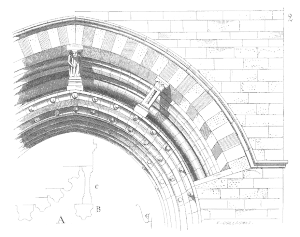
SPC Sample Size Impact on SPC
In this webinar, we explore the impact that chart selection and sample size have on chart sensitivity (the ability to detect changes).
See More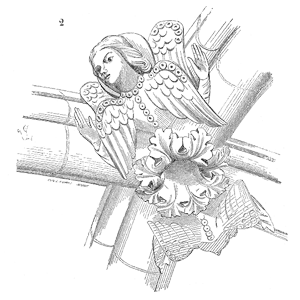
Reliability and Statistical Process Control
Let's explore some cases where effectively using statistical process control will enhance your product's reliability performance.
See More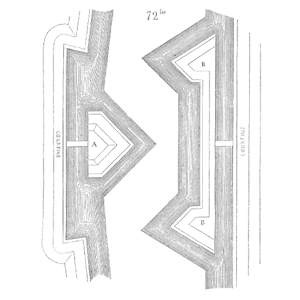
Understanding and Controlling Process Variation
Let's discuss process variation and how to measure, monitor, and control processes to minimize the differences from one part to the next.
See More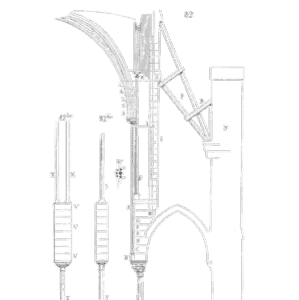
10 Keys for Maximizing the Benefits of Your SPC Program
Progressive manufacturers use control charts to listen to their processes to detect and rectify potentially harmful changes.
See More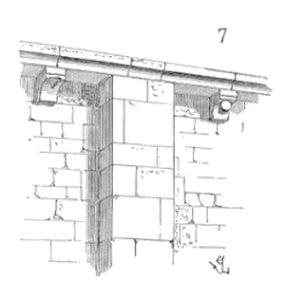
How do I link Process Capability Indices to Number (PPM) Defects?
if you need to learn a bit more about manufacturing and how we measure quality in general? Join us for this webinar.
See More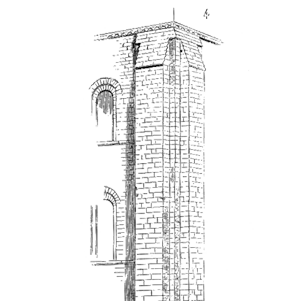
What is Statistical Process Control or SPC?
You may have heard of Statistical Process Control, 6-sigma, Shewhart, the Japanese Economic Miracle, X̅ R Charts or perhaps none of them.
See More
What is Process Capability Analysis (PCA)?
A process is considered capable' if it creates products that, with production natural variation, are still within what good' looks like.
See More
Fundamentals of Control Charts
Statistical control charting (SPC) is a method for monitoring and determining whether a process is in control or stable.
See More
Fundamentals of Process Capability
Let's explore the steps necessary to obtain valid and valuable process capability ratios. Then, let's examine how to use this information.
See MoreThe post Fundamentals of Hypothesis Testing appeared first on Accendo Reliability.
11 June 2024, 5:27 pm - More Episodes? Get the App
 Dare to Know: Interviews with Quality and Reliability Thought Leaders | Hosted by Tim Rodgers
Dare to Know: Interviews with Quality and Reliability Thought Leaders | Hosted by Tim Rodgers
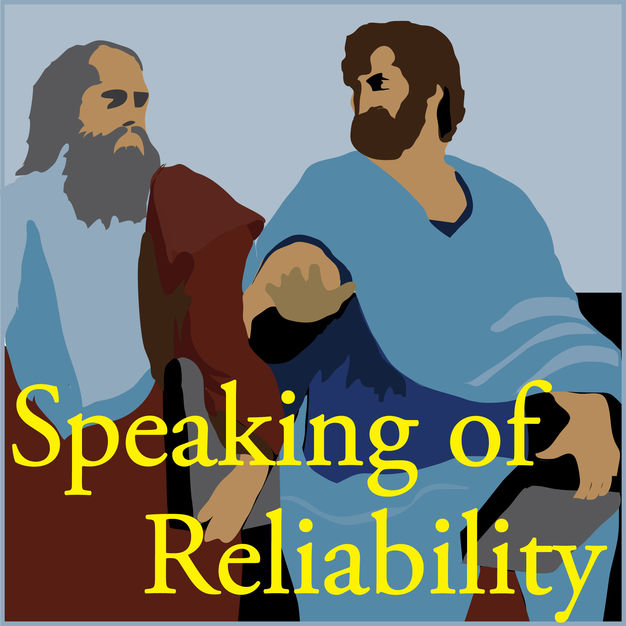 Speaking Of Reliability: Friends Discussing Reliability Engineering Topics | Warranty | Plant Maintenance
Speaking Of Reliability: Friends Discussing Reliability Engineering Topics | Warranty | Plant Maintenance
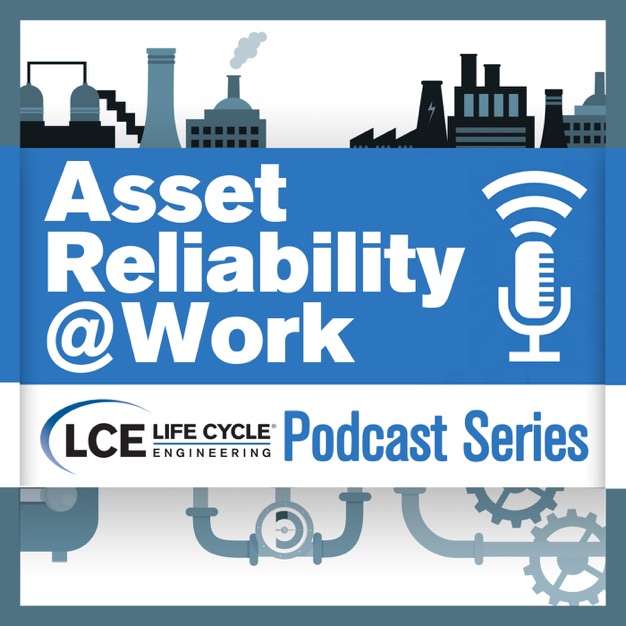 Asset Reliability @Work | Sharing insights and best practices for improving asset performance and reliability
Asset Reliability @Work | Sharing insights and best practices for improving asset performance and reliability
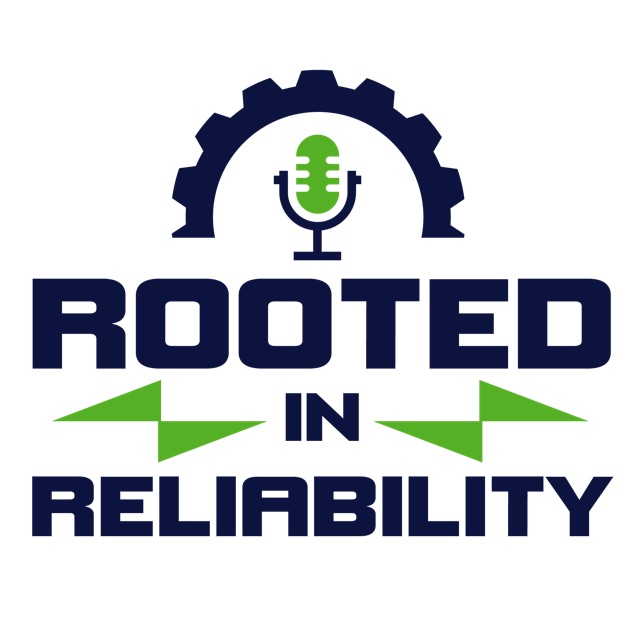 Rooted in Reliability: The Plant Performance Podcast
Rooted in Reliability: The Plant Performance Podcast
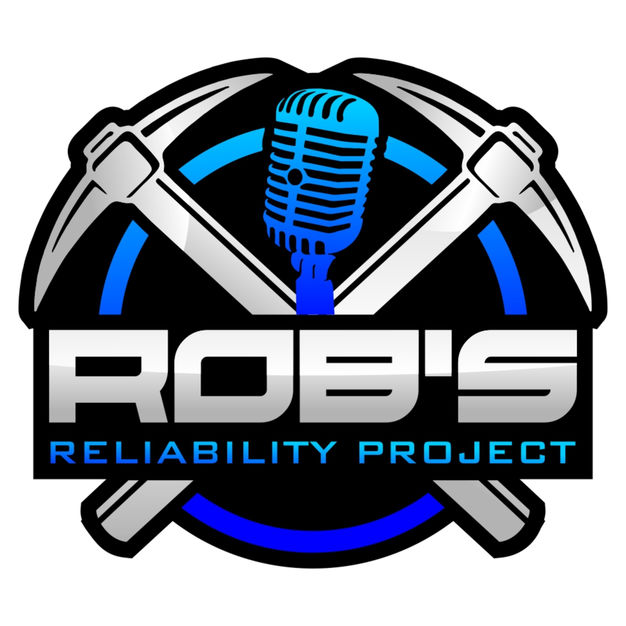 Rob's Reliability Project
Rob's Reliability Project
Your feedback is valuable to us. Should you encounter any bugs, glitches, lack of functionality or other problems, please email us on [email protected] or join Moon.FM Telegram Group where you can talk directly to the dev team who are happy to answer any queries.